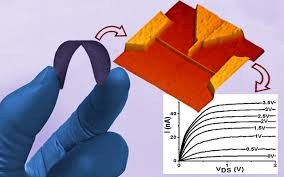Researchers at Michigan Technological University are using a 3D bioprinter to make synthesized nerve tissue. Their work could be used to help regenerate damaged nerves for patients with spinal cord injuries. Check out this video to see the 3D bioprinter in action:
Author Archives: Mark
The Next Stage of Wearable Technology: Printing Electronic Circuits from Liquid Metal
 Researchers from the Martinez Research Group in the Department of Biomedical Engineering at Purdue University have shown how standard inkjet-printers can be employed to produce flexible electronic circuits from liquid-metal nanoparticle inks. These elastic technologies could revolutionize medicine by making possible a new class of pliable robots and stretchable garments that people might wear for therapeutic purposes. Read more about the research recently published in Advance Materials.
Researchers from the Martinez Research Group in the Department of Biomedical Engineering at Purdue University have shown how standard inkjet-printers can be employed to produce flexible electronic circuits from liquid-metal nanoparticle inks. These elastic technologies could revolutionize medicine by making possible a new class of pliable robots and stretchable garments that people might wear for therapeutic purposes. Read more about the research recently published in Advance Materials.
New App Helps Researchers Contribute Data to Medical Studies
With the launch of ResearchKit, Apple has turned the iPhone into a medical research tool. ResearchKit makes it possible to generate large, wide-ranging datasets about the day-to-day of disease. Additionally, it allows researchers to recruit participants for large-scale studies. Bloomberg Business reported that 11,000 people had signed up for a cardiovascular study at Stanford University 24 hours after ResearchKit was introduced. Researchers at UCLA have already developed an app with ResearchKit for breast cancer, called Share the Journey: Mind, Body and Wellness after Breast Cancer – this app builds on the work of applied mathematician and TED Fellow Max Little. If you’re interested in finding out more about how Max Little’s work influenced the development of ResearchKit, you can watch his TED talk from 2012: A test for Parkinson’s with a phone call.